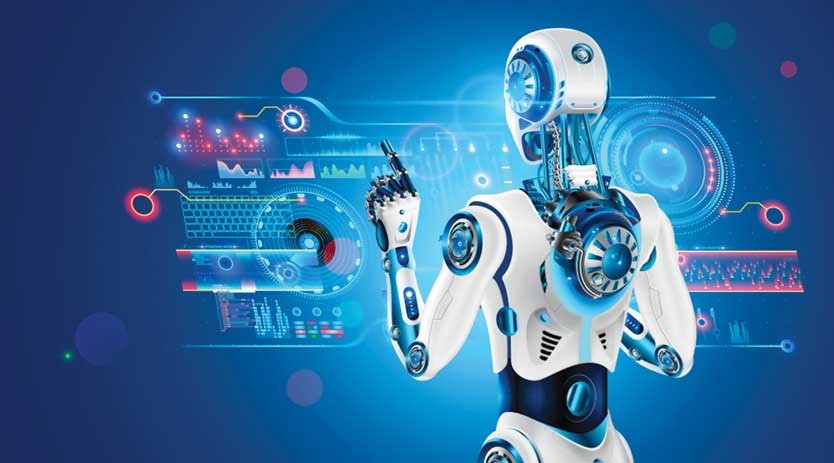The future of connected mobility
September 30, 2023 7:10 pm
India’s automotive landscape is diverse, with multiple segments showcasing significant sales. Recent reports indicate the sale of 3.5 million three-wheelers, 20 million two-wheelers, 3.6 million four-wheelers, and nearly half a million light and small commercial vehicles. This scenario paints a vibrant picture of the current market dynamics, where various Original Equipment Manufacturers (OEMs) are actively engaged, contributing to the country’s diverse and bustling automotive industry.
India demonstrated its capability for rapid transformation when it shifted from Bharat Stage 4 (BS4) to Bharat Stage 6 (BS6) emissions standards in just two years. This agility, driven by Indian innovation, indicates that India has the potential to surprise the market once again with its transition to electrification.
The electrification drive presents ample opportunities. While the current EV penetration in the market is only around 5%, the government is committed to achieving a 30% market share for EVs by 2030, with a significant milestone set for 2026. Tier-one suppliers from Western countries have adapted to this change in the Indian market for the past five years.
E-mobility reshaping EV manufacturing
Over the past few years, a significant transformation has been underway in the manufacturing sector, where traditional components like the Electronic Throttle Controller Actuator (ETC actuator) are being phased out due to the rise of electric vehicles (EVs). In the past, when you pressed the pedal of a passenger vehicle, the ETC actuator played a pivotal role in controlling the air intake valve into the combustion chamber. However, with electrification, numerous under-the-hood applications, including exhaust gas recirculation systems, are becoming obsolete, making way for advanced, high-tech components.
Recognising this trend, Gopalakrishnan VC , Director Automotive and EV Sector, Industries and Commerce Department, Government of Telangana, noted that the Government of Telangana, like many other regions, proactively introduced an EV policy early on. He adds, “This policy extends beyond EVs to encompass energy storage systems and the development of a robust charging network. Through stakeholder engagement and insights gained from international practices, the state crafted a comprehensive policy framework. Their objective was clear: attract manufacturers to invest in Telangana and promote higher adoption rates of EVs within the state.”
Customer Value
India’s electric vehicle (EV) landscape is evolving rapidly, with a strong emphasis on localisation and government support. However, it’s essential to remember that an EV is fundamentally a vehicle, and it must adhere to the core principles of vehicle manufacturing, such as safety, reliability, durability, affordability, and total cost of operation.
Keshab Chandra Sen, Principal Consultant, Vroomble, noted, “Over the next decade, the industry may witness the consolidation of smaller players as larger, more technologically advanced companies enter the market, benefiting from economies of scale and advanced technology. To sustain the growth of EVs in India, it is crucial to view them as a proposition to financiers. Financiers evaluate the residual value of vehicles when funding them. Therefore, for EVs to succeed, they must be designed to meet customers’ financial requirements, deliver consistent performance, and remain operational for a decade or more.”
Opportunities
Vikas Gupta, Founder, MD and CFO of Sampoorn EV Limited, shares that the electric vehicle (EV) sector presents an exciting opportunity, even for non-technical individuals like himself, who by qualification is a chartered accountant. This highlights the industry’s significance and unique blend of advanced technology and relative simplicity. He adds, “One remarkable aspect of the EV industry is its potential to empower around 200,000 people who may not have considered investing in traditional internal combustion engine (ICE) products. In the ICE industry, dealership investments typically start at a hefty range of ₹2.5 to ₹ three crore, while in the EV sector, the entry threshold can be as low as ₹7.5 to ₹10 lakh.”
EV ride-hailing services
Ride-hailing services, such as HALA Mobility and others, rely significantly on platforms or apps. Mr Gopalakrishnan adds, “Our current policy does not directly address the gig economy, mainly because these platforms are often used for delivering goods, like food delivery apps. One notable challenge we’ve identified through discussions over the past year is related to the speed of these vehicles. Some of them operate at speeds below 25 kilometres per hour, while others exceed this limit. Registering such vehicles can be problematic. When a vehicle falls below the 25-kilometer-per-hour threshold, it can’t be officially registered, which means it lacks a formal identity. This poses difficulties for ride-hailing platforms in terms of vehicle identification and security. In theft cases, proving that a vehicle has been stolen becomes a challenge.”
Spare part market
The transition to electric vehicles (EVs) is reshaping the spare parts industry. Unlike internal combustion engine (ICE) vehicles with hundreds of components, EVs have significantly fewer parts. Additionally, the repair of electronic components is often considered disposable. However, EVs will still rely on certain parts, especially wear and tear components and some electrical parts with unpredictable lifespans.
Mr Sen notes that the service model for EVs is evolving because they are now connected vehicles. Shortly, we might stop referring to them as “EVs” and instead call them “connected vehicles” or “e-mobility.” These vehicles can predict their failures, particularly with four-wheelers and large trucks. They can notify the owner in advance, allowing time to arrange the necessary parts. This shift means higher reliability as fewer parts are involved. Moreover, the traditional wait-and-see approach for repairs will change with digital transformation and technology.
Mr. Sachin Wagh, Director of Vehicle & Consulting, FEV India Pvt Ltd, added, “Regarding spare parts and services, there is anticipation of the emergence of new models. With the increasing incorporation of electronics, especially in electric vehicles (EVs), we’re witnessing the rise of technologies like digital twins.” These technologies are crucial for managing the complexities of EVs, which essentially become “software on wheels.” While traditional spare parts like tires, brakes, and suspensions will remain, electrical and electronic components are becoming more reliable. Failures are often software-related and are logged in the cloud, allowing data analytics teams to identify and address issues remotely. This suggests that the $54 billion industry will undergo a transformation, with different models emerging for servicing EVs. While hardware may decrease in importance, the overall market potential remains significant.
AI and Machine learning
According to Mr Gupta, the monthly production volume for four-wheelers is around 30,000 to 35,000 units. Three-wheelers see a monthly production volume of approximately 1.5 to 2 lakh vehicles; the two-wheeler industry produces roughly 2 to 2.5 lakh vehicles per month. Given these production levels, there is currently little need to implement AI extensively in the assembly or manufacturing processes. However, AI technology will become more relevant and valuable as production volumes increase. It has the potential to automate manual tasks and enhance precision in the assembly and manufacturing processes within the EV industry.
Mr. Sen also notes that while our fascination with technology is evident, it’s essential to consider both return on investment (ROI) and production volumes when implementing artificial intelligence (AI). AI can be particularly valuable in decision-making processes, especially in scenarios like supply chain management, where fluctuations in demand, supply, and sourcing costs occur. AI and analytics are essential for enabling flexible manufacturing. Integrating management information systems (MIS), enterprise resource planning (ERP), and other systems with AI and analytics is crucial to achieve this flexibility. Machine learning and other AI technologies can also significantly enhance quality control processes.
Future of connected mobility
Electric bicycles have become the standout product of this decade, fitting into the trend of people prioritising their health. Mr Gupta shares, “In pursuing a healthier lifestyle, many opt to cycle short distances and then resort to an auto for the return journey. Electric bicycles provide an ideal solution by allowing you to cycle as much as you want. You can switch between pedal-assist mode, where the motor and your pedalling share the workload, or go into full motor mode. This technological advancement offers flexibility and convenience.”
Electric two-wheelers are taking centre stage with budget-friendly models around ₹50,000 that offer luxury car-like features. Innovations like a side stand sensor to prevent movement with the stand down, a reverse gear, and a convenient repair switch were unheard of in traditional ICE technology, making EVs a game-changer for two-wheeler riders.
Environmental concerns
The concept of the future is intriguing, particularly when we consider the term “connected vehicle” instead of solely “electric vehicle.” Mr Sen implies that while electric vehicles (EVs) are currently in the spotlight, they might be replaced by alternative technologies like hydrogen or others. The future remains uncertain in this regard.
Another critical aspect to ponder is that a substantial portion, approximately 58%, of India’s power generation relies on coal. This raises concerns about environmental pollution despite the efforts to promote cleaner mobility within cities. The path to achieving carbon neutrality hinges on transitioning to renewable energy sources to replace coal, a significant contributor to pollution. Otherwise, generating electricity for electric vehicles within cities might still involve environmentally harmful practices.
EV Trucks
The full adoption of electric vehicles (EVs) hinges on addressing hurdles related to heavier vehicles like trucks and ensuring seamless last-mile connectivity. Presently, EVs grapple with limitations due to the substantial weight and cost of batteries, especially in the context of trucks. However, Tesla’s introduction of an electric truck represents progress, potentially driving innovations that can reduce battery weight or enable onboard energy generation. Onboard energy generation is not a new concept, exemplified by diesel locomotives operating for years – essentially functioning as EVs by producing electricity onboard using diesel fuel to power traction motors. This enduring approach underscores the significance of generating energy on board.
For EVs to substantially impact, particularly in the trucking industry, we must conquer challenges such as battery weight, cost, and energy generation. Trucks might require alternative solutions, like drawing power from overhead lines like electric trains. We need to overcome these obstacles before the success of EVs remains uncertain. Merely producing a high volume of two-wheelers will not resolve the broader issues in mobility. To genuinely shape the future, we must address these challenges, primarily focusing on larger vehicles and finding energy generation solutions.
Quotes
Gopalakrishnan VC, Director of Automotive and EV Sector, Industries and Commerce Department, Government of Telangana“With electrification, numerous under-the-hood applications, including exhaust gas recirculation systems, are becoming obsolete, making way for advanced, high-tech components in the automotive industry.”
Keshab Chandra Sen, Principal Consultant, Vroomble
“The concept of the future is intriguing, particularly when we consider the term “connected vehicle” instead of solely “electric vehicle.”
Sachin Wagh, Director – Vehicle & Consulting, FEV India Pvt Ltd
“The EV revolution has the potential to transform not only the Indian automotive landscape but also influence the global automotive industry.”
Vikas Gupta, Founder, MD and CFO, Sampoorn EV Limited
“One remarkable aspect of the EV industry is its potential to empower non-technical individuals to venture into the automotive industry who may not have considered investing in traditional internal combustion engine (ICE) products.”
Cookie Consent
We use cookies to personalize your experience. By continuing to visit this website you agree to our Terms & Conditions, Privacy Policy and Cookie Policy.

















 English
English Hindi
Hindi